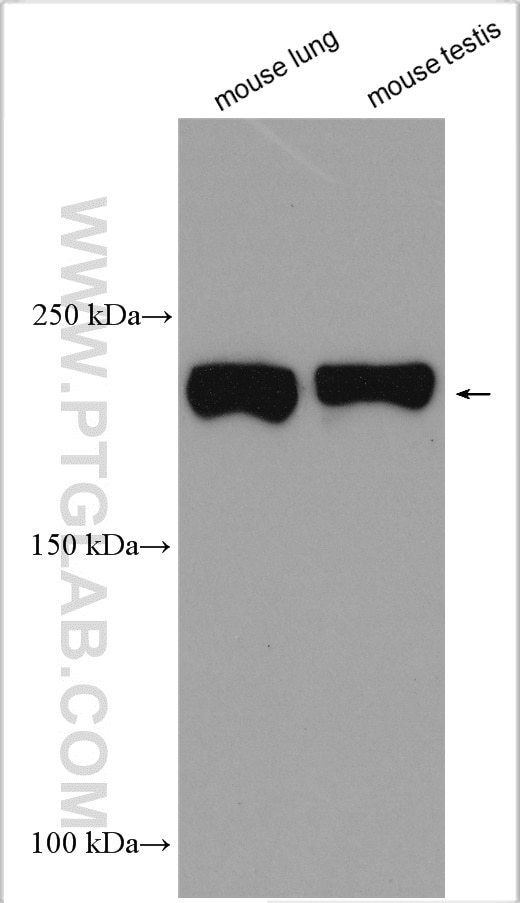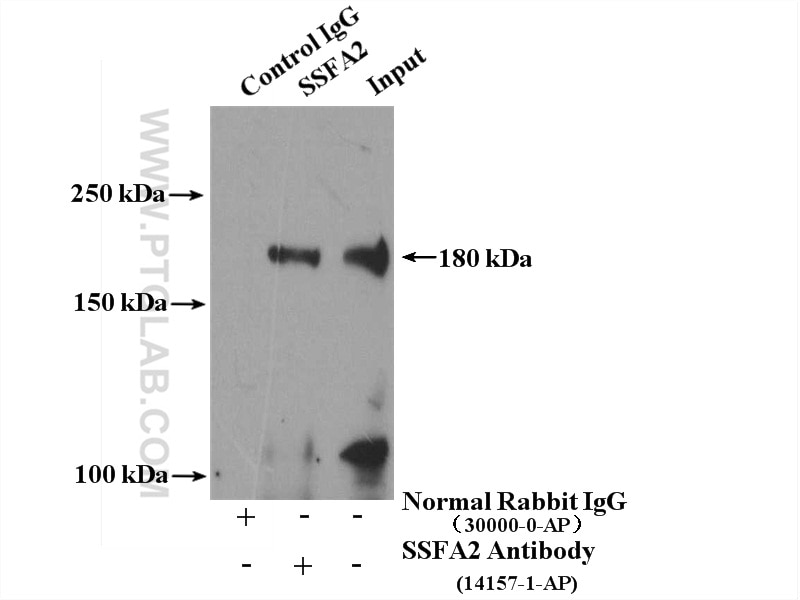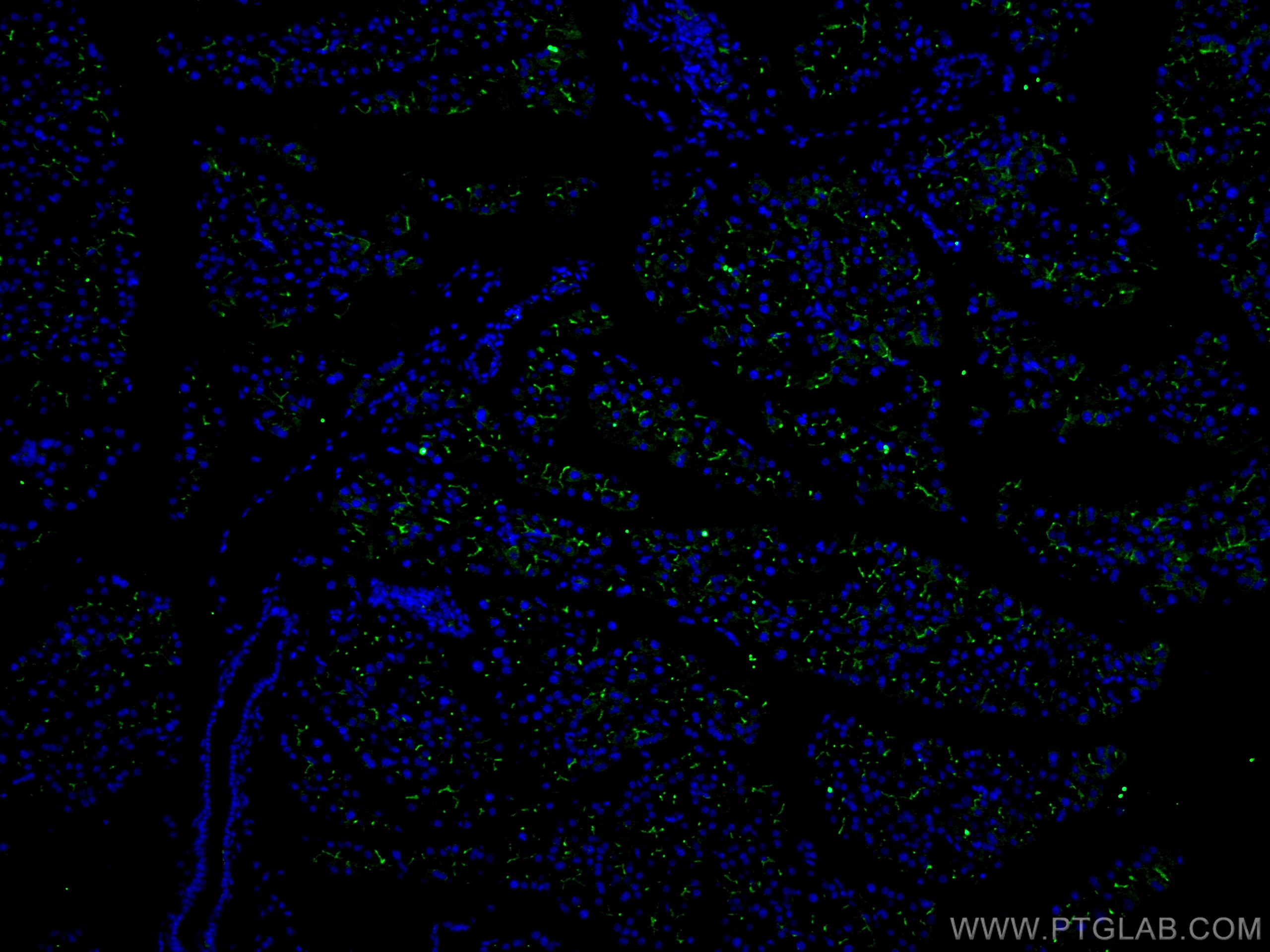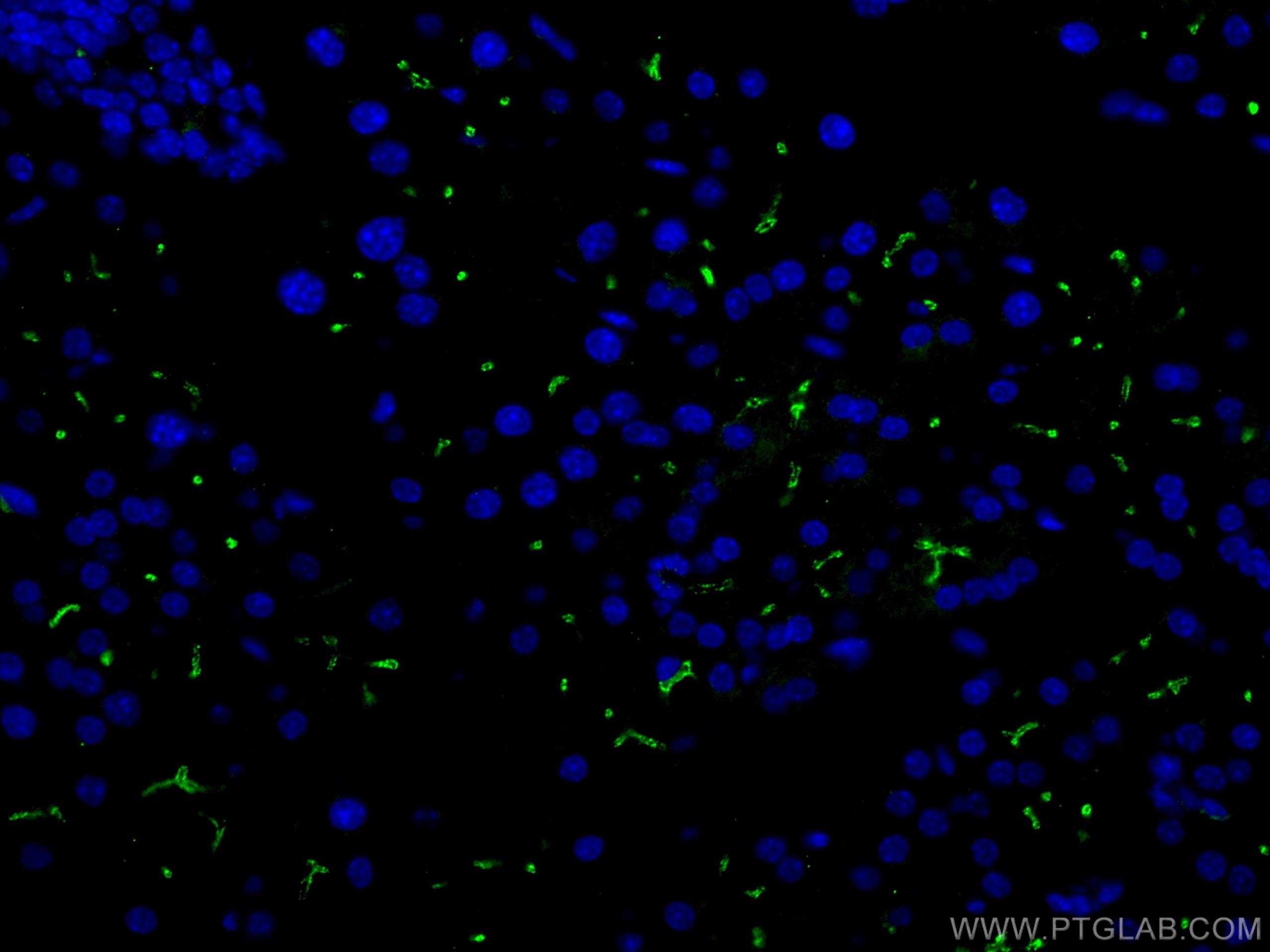Validation Data Gallery
Tested Applications
| Positive WB detected in | mouse lung tissue, mouse testis tissue, rat lung tissue |
| Positive IP detected in | mouse testis tissue |
| Positive IHC detected in | human stomach tissue Note: suggested antigen retrieval with TE buffer pH 9.0; (*) Alternatively, antigen retrieval may be performed with citrate buffer pH 6.0 |
| Positive IF-P detected in | mouse pancreas tissue |
Recommended dilution
| Application | Dilution |
|---|---|
| Western Blot (WB) | WB : 1:500-1:1000 |
| Immunoprecipitation (IP) | IP : 0.5-4.0 ug for 1.0-3.0 mg of total protein lysate |
| Immunohistochemistry (IHC) | IHC : 1:200-1:800 |
| Immunofluorescence (IF)-P | IF-P : 1:200-1:800 |
| It is recommended that this reagent should be titrated in each testing system to obtain optimal results. | |
| Sample-dependent, Check data in validation data gallery. | |
Published Applications
| KD/KO | See 3 publications below |
| WB | See 7 publications below |
| IHC | See 2 publications below |
| IF | See 3 publications below |
| CoIP | See 1 publications below |
Product Information
14157-1-AP targets KRAP/SSFA2 in WB, IHC, IF-P, IP, CoIP, ELISA applications and shows reactivity with human, mouse, rat samples.
| Tested Reactivity | human, mouse, rat |
| Cited Reactivity | human, canine |
| Host / Isotype | Rabbit / IgG |
| Class | Polyclonal |
| Type | Antibody |
| Immunogen |
CatNo: Ag5339 Product name: Recombinant human KRAP, SSFA2 protein Source: e coli.-derived, PGEX-4T Tag: GST Domain: 907-1256 aa of BC028706 Sequence: SAIEMQLRRVLHDIRNSLQNLSQYPMMRGPDPAAAPYSTQKSSVLPLYENTFQELQVMRRSLNLFRTQMMDLELAMLRQQTMVYHHMTEEERFEVDQLQGLRNSVRMELQDLELQLEERLLGLEEQLRAVRMPSPFRSSALMGMCGSRSADNLSCPSPLNVMEPVTELMQEQSYLKSELGLGLGEMGFEIPPGESSESVFSQATSESSSVCSGPSHANRRTGVPSTASVGKSKTPLVARKKVFRASVALTPTAPSRTGSVQTPPDLESSEEVDAAEGAPEVVGPKSEVEEGHGKLPSMPAAEEMHKNVEQDELQQVIREVGMDPISCVILELSMICTGGGVICALEDTCC 相同性解析による交差性が予測される生物種 |
| Full Name | sperm specific antigen 2 |
| Calculated molecular weight | 138 kDa |
| Observed molecular weight | 180 kDa |
| GenBank accession number | BC028706 |
| Gene Symbol | SSFA2 |
| Gene ID (NCBI) | 6744 |
| RRID | AB_2195472 |
| Conjugate | Unconjugated |
| Form | |
| Form | Liquid |
| Purification Method | Antigen affinity purification |
| UNIPROT ID | P28290 |
| Storage Buffer | PBS with 0.02% sodium azide and 50% glycerol{{ptg:BufferTemp}}7.3 |
| Storage Conditions | Store at -20°C. Stable for one year after shipment. Aliquoting is unnecessary for -20oC storage. |
Background Information
KRAP (Ki-ras-induced actin-interacting protein), also known as SSFA2, CS1 or SPAG13, is a 1,259 amino acid cytoplasmic protein associated with filamentous-actin (F-actin). KRAP is strongly expressed in pancreas and testis. It is also present in colon cancer cell lines, and the expression is up-regulated by activated K-Ras. KRAP-deficient (KO) mice display decreased adiposity and improved glucose metabolism, implicating KRAP as a potential target for the prevention or treatment of obesity and related diseases. KRAP has also been suggested to be a potential target for cancer. This antibody recognizes endogenous KRAP, which migrates with an apparent molecular mass of 180 kDa in SDS-PAGE. (PMID: 14673706; 21501587; 21873152)
Protocols
| Product Specific Protocols | |
|---|---|
| IF protocol for KRAP/SSFA2 antibody 14157-1-AP | Download protocol |
| IHC protocol for KRAP/SSFA2 antibody 14157-1-AP | Download protocol |
| IP protocol for KRAP/SSFA2 antibody 14157-1-AP | Download protocol |
| WB protocol for KRAP/SSFA2 antibody 14157-1-AP | Download protocol |
| Standard Protocols | |
|---|---|
| Click here to view our Standard Protocols |
Publications
| Species | Application | Title |
|---|---|---|
Nat Commun KRAP tethers IP3 receptors to actin and licenses them to evoke cytosolic Ca2+ signals.
| ||
J Cell Sci Vimentin and the K-Ras-induced actin-binding protein control inositol-(1,4,5)-trisphosphate receptor redistribution during MDCK cell differentiation.
| ||
J Proteomics Relationship between phosphorylation of sperm-specific antigen and prognosis of lung adenocarcinoma. | ||
Reprod Biol Endocrinol A loss-of-function variant in SSFA2 causes male infertility with globozoospermia and failed oocyte activation. | ||
J Cell Sci CREB regulates the expression of type 1 inositol 1,4,5-trisphosphate receptors | ||
Curr Biol A sustained calcium response mediated by IP3 receptor anchoring to the desmosome is essential for apoptotic cell elimination
|






